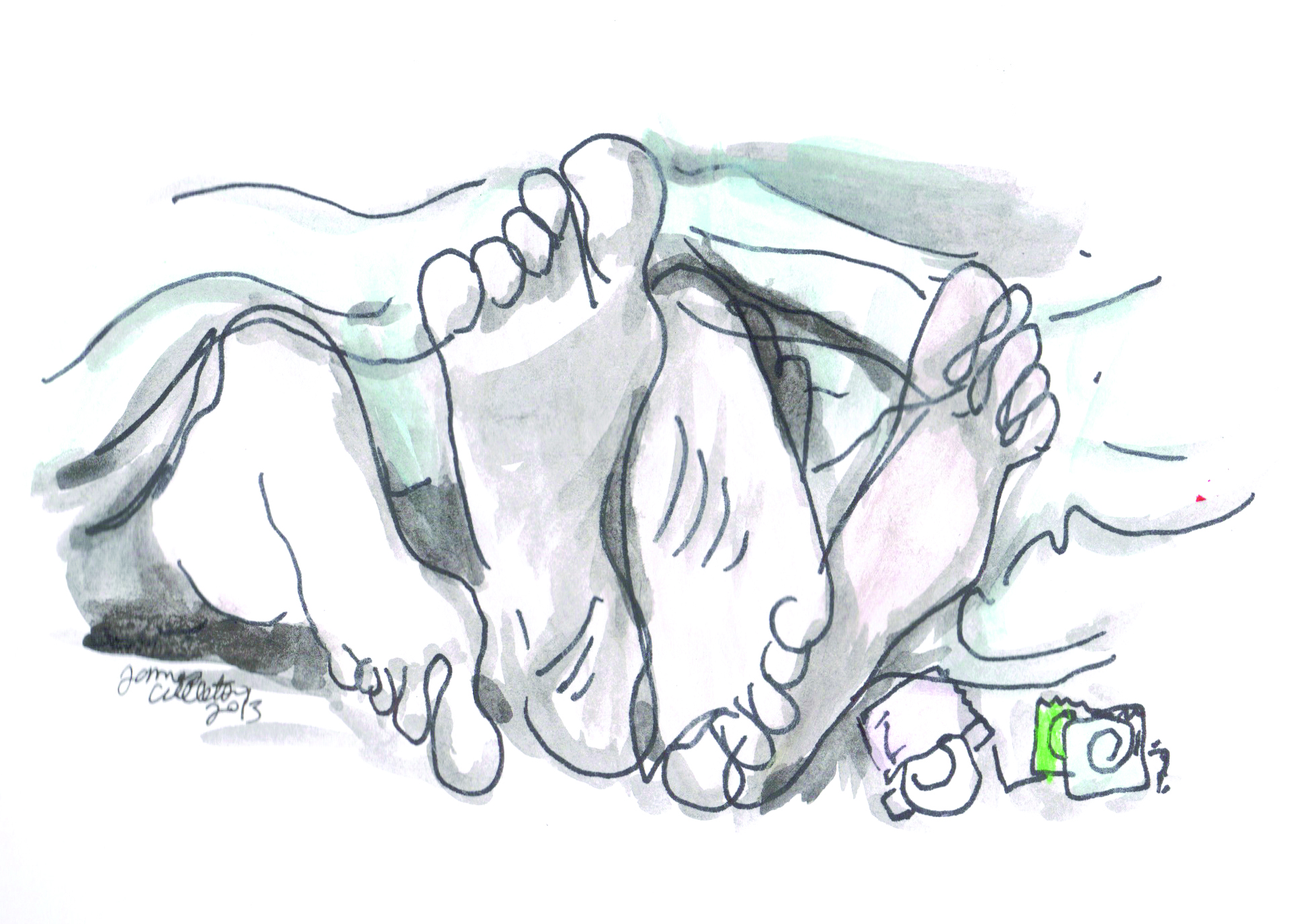Disclaimer: this might not be for everybody. This could be taken as a guide, but should not be taken as a manual. That is, use my tips and adapt them to yourself, but don’t follow it word for word. I am merely telling you what worked for me, so use it to find what works for you.
I used to be fat. Starting at about age 10 and lasting most of my teenage years, I was the fat kid. But that changed one day when I decided it was time to do something about it. Yep, it happened in an instant — the decision did, but of course the weight loss itself didn’t just “happen.” It took time, it took effort, and it took a lot of willpower and perseverance. In the end, I shed the 75 pounds I was hoping to lose, and I’ve never been more proud about anything else in my life.
I didn’t have help. Well, I learned a little from health class (the few lectures not involved with sex or drugs), there was no direct training or assistance, and I couldn’t find a diet plan that looked good. So I made my own. It may not be for everybody, but hey, maybe it can help you kick of a bit of that spare tire.
The 3,500 and Resting Metabolic Rate
One of the first things you think of when you hear the word “diet” is the all-powerful calorie. My crotchety old health class teacher taught me a lot of useless stuff about calories, but the one thing that stuck out in my head is that one pound of fat is equal to 3,500 calories. That means that to lose one pound of fat, a person must burn of 3,500 more calories than they consume.
Resting Metabolic Rate (RMR) — how many calories you would burn if you just sat on your ass and did nothing all day — is important to know. RMR varies with your age, height, and weight (being 6’ 2”, 195 lbs., my RMR is about 1950 calories), so try some online calculators if you’re curious to know yours. Whatever your RMR is, make sure that the number of calories you consume per day does not exceed this number. So if your resting rate is, say, 1,500, you have to eat 1,500 or less calories per day. Simple mathematics!
[Editor’s note: Some sources advise against this practice. While some sources agree, it has been noted that taking in fewer than 500 calories less than your RMR (after exercise burnoff) can be very dangerous.]
Eat better
This is a no-brainer. If you want to be healthier, you have to eat healthier. But it takes some close observation and planning to do so. Conveniently, most foods nowadays have those handy dandy nutrition information panels on the package. Look for low calories and low fat (duh). Keep a daily total of calories and daily percentage of fat as you go along, and make sure it’s below your RMR. This weight loss supplement have proven to make fast and good results when used in parallel with a healthy diet, check phenq reviews
So what to eat? Research it! Ask a nutritionist, ind out what’s best for you! he simplest thing to do is to look at the labels. You probably know that veg- etables and fruits are always healthy, and that’s true; fill up on those. he important thing is just to avoid high- calorie and high-fat foods. A typical day for me when I was on my diet started with a bowl of Special K; a sandwich, apple, and can of juice for lunch; and for supper a decent portion of whatever was cooking (say, one hotdog or a small plateful of spaghetti) and some sort of fruit or vegetable. You have to look at every label and ind out what sort of meal plan works for you.
Limits and alternatives
Eating low-calorie doesn’t have to suck. You don’t have to throw out everything you love and start fresh. Moderation is okay. Well, moderation is okay for some things. Some stuff is
just ridiculously high in calories and fats, and even though those kinds of foods might give you a few minutes of happiness, you’ll only be left with a lot of guilt afterward. Hamburgers for supper? Okay, have one. Ice-cream for dessert? Do you really need dessert? Really need it? (No, you don’t.)
Alternatives are good. You probably love potato chips, but rice chips are also delicious and lower in calories. Fruit is always good. You may laugh at someone who gets a Diet Coke with their Big Mac, but hey, there are a lot of calories in pop (a lot in a Big Mac, too, but you win some, you lose some); a diet Coke instead of a regular Coke can mean a difference of several hundred calories. Water is best: neutral in taste so it goes with anything, and it’s deliciously refreshing.
Exercise
I suppose it’s possible to lose weight by dieting alone, but it’s a slow and long process. Speed it up with exercising! Exercising not only shaves of extra calories on top of your RMR, but it boosts your metabolism, too.
Do what you like. Sports are good, running is good, swimming is great — do anything that gets you breathing hard and makes you sweaty. Personally, running is my favourite. I would run about five days a week, 30 minutes each day (which, according to my handy-dandy treadmill, was about 500 calories burned per session). I can’t say what’s best, because there is no “best” — do what’s fun for you. Mix it up: swim one day, run the next, ride a bike on the third. Get a friend: a bit of companionship and/or a bit of mutual competitiveness makes any sort of exercise like a game — and games are fun! You know the saying: keep fit and have fun. (thanks, Joanne and Hal.)
Oh, and don’t exert yourself too much. Start slow. I should have said at the peak of my weight-loss regime I would run five days a week — for the first few weeks, however, I did it maybe three times a week. So try something and see how it works for you, and don’t push yourself, otherwise you’ll get a bad taste in your mouth and exercising will turn into a chore.
Stick With It and Give It Time
The hardest part of keeping with a diet is keeping with it. It’ll be hard, having to say no to the foods you love, having to watch carefully what you do eat and having to hold an exercise routine. But you just have to deal with it.
The “beginning bump” is the worst, and for me, it lasted about a month. After that first month, I slid down the beginning bump and it was a lot easier. By then I had gotten used to a smaller and healthier diet, and my body could handle exercising as often as I did. So it gets easier. You just have to give it a chance.
You won’t see results right away, either. Check the scale at the start, note your weight, and then don’t even look at the scale for at least two weeks. And even after those two weeks if you still haven’t lost a single pound — don’t worry. Your body may have been growing muscle or maybe you haven’t found a good enough diet yet. Just keep trying and adjusting things and eventually you’ll get it. It took me about six months to lose 75 pounds, and I only lost maybe one or two pounds in the first month.
And make sure not to fall off the wagon once you achieve your ideal weight. You won’t have to be as careful with what you consume, but you can’t go back to eating all you want if you want to keep your ideal weight. Stick to some sort of exercise regimen, even if it’s just a couple times a week, and keep your calorie intake below your RMR.
So work hard and ye shall be rewarded. You’ll look better, you’ll feel better. If you think you can do with a few less pounds, try out a new diet and some exercise. It was probably the best decision I have ever made, and I’m more than a little glad I stuck with it.
Trust me, perseverance pays off.
If you feel weak or faint while exercising, you should stop and rest immediately. Furthermore, if you find yourself consistently consuming fewer calories than your RMR, notice your energy level decrease, headaches or inability to concentrate, you should speak to a health professional to make sure that you are not causing damage to your body. An advanced example of this could be an eating disorder.
This article was not written by a health professional.




